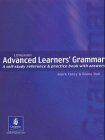

Most ebook files are in PDF format, so you can easily read them using various software such as Foxit Reader or directly on the Google Chrome browser.
Some ebook files are released by publishers in other formats such as .awz, .mobi, .epub, .fb2, etc. You may need to install specific software to read these formats on mobile/PC, such as Calibre.
Please read the tutorial at this link: https://ebookbell.com/faq
We offer FREE conversion to the popular formats you request; however, this may take some time. Therefore, right after payment, please email us, and we will try to provide the service as quickly as possible.
For some exceptional file formats or broken links (if any), please refrain from opening any disputes. Instead, email us first, and we will try to assist within a maximum of 6 hours.
EbookBell Team

4.8
54 reviews
ISBN 10: 0582403839
ISBN 13: 9780582403833
Author: Mark Foley
Part I: Verb Tenses and Forms
Unit 1: Present tenses
1.1 Present simple
1.2 Present continuous
1.3 Verbs rarely used in the continuous
Unit 2: Past tenses
2.1 Past simple
2.2 Past continuous
2.3 Past perfect
2.4 Past perfect continuous
2.5 Used to / would
Unit 3: Past to present tenses (Perfect tenses)
3.1 Present perfect simple
3.2 Present perfect and past simple - differences
3.3 Present perfect continuous
3.4 Present perfect simple and continuous - differences
Unit 4: The future (1)
4.1 Will and be going to
4.2 Present simple and continuous for the future
Unit 5: The future (2)
5.1 Future continuous and future perfect
5.2 Expressions with future meaning (be to, be due to, etc.)
5.3 Future in the past
Round up (Units 1-5): Tenses
Part II: Other Verb Structures
Unit 6: Negation
6.1 Negative statements
6.2 Negative questions
6.3 Words with negative meaning
Unit 7: Questions
7.1 Closed and open questions
7.2 Tag questions
7.3 Indirect questions
7.4 Echo questions
Unit 8: Passives, causatives and get
8.1 Passive forms
8.2 Passive -ing forms and infinitives
8.3 Have/get + object + past participle
8.4 Uses of the passive
Unit 9: Reported speech
9.1 Direct and indirect speech
9.2 Indirect statements
9.3 Indirect questions and commands
9.4 Reporting verbs and their patterns
Unit 10: Conditionals
10.1 Zero, First, Second, and Third conditionals
10.2 Mixed conditionals
10.3 Alternatives to if (unless, provided that, etc.)
Unit 11: The subjunctive and 'unreal' uses of past forms
11.1 The subjunctive form
11.2 The 'unreal' past
11.3 wish / if only
Round up (Units 6-11): Verb Structures
Part III: Non-finite Verbs and Multi-word Verbs
Unit 12: -ing forms and infinitives
12.1 Verbs followed by -ing
12.2 Verbs followed by the infinitive
12.3 Verbs followed by -ing or the infinitive
Unit 13: Participle and infinitive phrases
13.1 Participle phrases (form and use)
13.2 Infinitive phrases (form and use)
Unit 14: Multi-word verbs
14.1 Form and use (phrasal, prepositional, phrasal-prepositional)
14.2 Word list of common multi-word verbs
Part IV: Modal Verbs
Unit 15: Modal verbs (1): can, could, may, might, be able to
15.1 Ability and possibility
15.2 Deduction and speculation
15.3 Permission and requests
Unit 16: Modal verbs (2): must, should, ought to, have to, need to
16.1 Obligation and necessity
16.2 Advice and recommendations
Unit 17: Modal verbs (3): will, would, shall
17.1 Intention and willingness
17.2 Habit and frequency
Unit 18: Auxiliaries, have (got), do
Part V: Nouns, Determiners, and Pronouns
Unit 19: Nouns and noun phrases
19.1 Countable and uncountable nouns
19.2 Singular and plural forms
19.3 Compound nouns
Unit 20: Possessives
Unit 21: Articles (a/an, the, zero article)
Unit 22: Determiners
22.1 All, both, whole, etc.
22.2 Each and every
22.3 Quantifiers (much, many, a few, etc.)
Unit 23: Pronouns
23.1 Personal, reflexive, and possessive pronouns
23.2 Indefinite pronouns (one, ones, etc.)
Part VI: Adjectives and Adverbs
Unit 24: Adjectives
24.1 Position and order of adjectives
24.2 Gradable and ungradable adjectives
Unit 25: Comparison
25.1 Comparative and superlative forms
25.2 Comparison phrases and clauses
Unit 26: Adverbs
26.1 Position of adverbs
26.2 Types of adverbs (manner, time, place, etc.)
26.3 Sentence adverbs and viewpoint adverbs
Part VII: Clauses and Discourse
Unit 27: Relative clauses
27.1 Defining and non-defining clauses
27.2 Omitting relative pronouns
Unit 28: Linking clauses
28.1 Time and reason
28.2 Result and purpose
28.3 Concession clauses (although, even though, etc.)
Unit 29: Adverbial clauses
Unit 30: Features of discourse and cohesion
30.1 Connecting ideas (conjunctions, linking adverbs)
30.2 Cohesion and reference words
Part VIII: Prepositions and Other Structures
Unit 31: Prepositions
31.1 Prepositions of position, movement, and time
31.2 Prepositions after verbs, nouns, and adjectives
Unit 32: Dependent prepositions
Unit 33: Inversion and other fronting devices
Unit 34: It... and There is...
Unit 35: Verb complementation
35.1 Verbs followed by different structures
Unit 36: Aspects of cohesion
longman advanced learners' grammar pdf
longman advanced learners' grammar answer key pdf
longman advanced learners grammar pdf vk
longman advanced learners grammar pdf free download
longman advanced learners grammar answer key
longman advanced learners grammar free download
Tags: Mark Foley, Longman, Learners